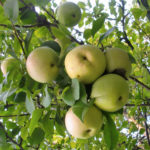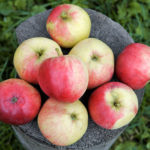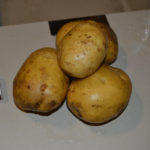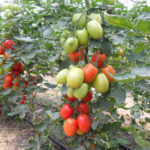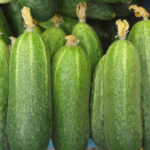Hydrangea paniculata Diamond rouge
Panicle hydrangeas have long taken their rightful place in the list of ornamental plants loved by flower growers. Their appearance sometimes makes the heart swoon with delight. One of the newest and at the same time the most charming varieties of this variety of hydrangeas should be called Diamond Rouge. After reading the basic information about him, you probably want to plant this culture in your garden.
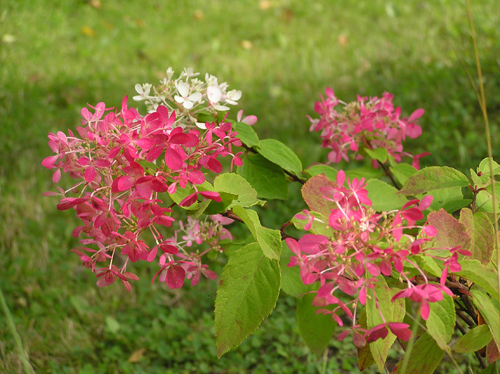
History of origin
Diamond rouge is the brainchild of French breeders. It was bred at the beginning of this century in the nursery "Pepinieres Renault". Seven years ago, the noble beauty won a silver medal at the plantarium 2011 flower exhibition, which took place in the Dutch city of Boskop. There she received the title of "variety with the reddest flowers."
Description of appearance and features
Diamond Rouge grows in the form of a compact bush, whose height does not exceed 1.5 meters, as does the width. It consists of a branched root system, lying at a shallow depth, straight shoots with a brownish-red tint, and large, rather dense, oppositely spaced oblong green leaves with sharp tips and light pile. The shrub is deciduous and with the arrival of autumn pleases the eye with orange-purple foliage. Among the features of hydrangea are the average growth rate.
What are the inflorescences of this plant? These are panicles of large sizes (30-40 cm in length and up to 20 cm in width), pyramidal in shape, formed by small delicate flowers with large sepals. At the moment of their appearance, they are snow-white, somewhere in the middle of the flowering phase they acquire a pink color, and become saturated cherry-red by the end of summer. Lush inflorescences on the bush can be observed from the second half of June to September. True, Diamond Rouge blooms only in the third year of life.
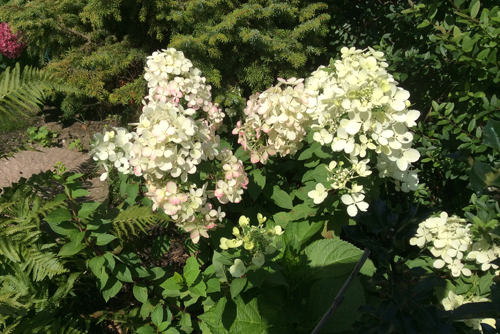
Of all the varieties of panicle hydrangea known today, our heroine is the most cold-resistant. According to the creators of Diamond rouge, this crop is suitable for cultivation even in regions with harsh climates. In addition, it is rarely affected by pests and diseases and is highly resistant to air pollution.
Growing and care
The French hydrangea variety belongs to the light-loving varieties. But since the direct rays of the sun can cause burns on its leaves and provoke burnout of bright inflorescences, it is better to place the culture in partial shade conditions. A strong wind will also not be to your taste for ornamental shrubs.
It is recommended to use fertile, loose, moisturized soil for planting a flower with a spectacular appearance, with a pH of about 5.5. The more acidic the soil you pick up, the brighter the inflorescences will be on the plant, and vice versa, a neutral reaction will make them paler. Diamond Rouge does not tolerate an alkaline soil rich in lime, as well as a sandy substrate that quickly loses nutrients along with water. You can acidify the soil by sprinkling it with milk whey.
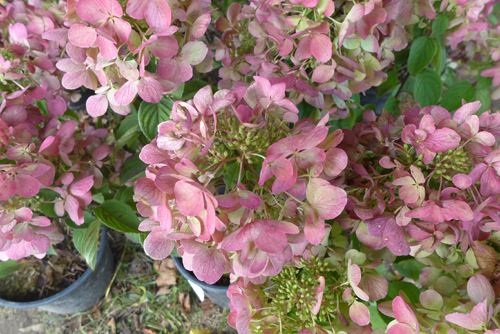
The plant is planted in a hole 60 cm in diameter and up to half a meter deep. Drainage is required at the bottom of the hole. The most optimal composition of the soil mixture for varietal hydrangea: 2 parts of leafy soil, the same amount of humus, 1 part each of sand and peat. The root collar is not buried during planting. At the end of the procedure, the culture requires abundant watering, after - loosening and mulching. Keep a distance of at least 40 cm between plants.
The variety is very hygrophilous. Diamond Rouge does not tolerate drought well, and therefore the soil under the flower must be moistened as soon as it begins to dry out. To do this, use soft water at room temperature. The next day, after each watering, the soil is carefully loosened, trying not to damage the roots of the beauty.
In order for the hydrangea to be strong and bloom profusely, it should be fed in a timely manner. In the spring, at the end of March and April, the soil under the flower is fertilized with organic matter.In summer, including in the bud formation phase and at the beginning of flowering, the culture needs feeding with a complex preparation or a mixture rich in phosphorus. In August and September, the plant requires potassium-phosphorus fertilizers for successful wintering. Fertilizing the plant with manganese-acid potassium in the form of a weak solution reduces the fragility of the shoots of Diamond Rouge. Fertilizers are applied to the soil 2 times a month.
The key to success when growing a shrub is to prune it regularly. Every year in the spring, healthy shoots of the plant are shortened by 2/3 of the length. These manipulations are carried out before the start of sap flow. This will help you to achieve abundant and long-lasting flowering. Pruning should also affect twisted, diseased, damaged and dry stems. The same applies to the autumn event, but in addition it is worth removing dry hydrangea inflorescences.
Of the pests on Diamond Rouge, the appearance of aphids, spider mites, bedbugs, pennies, nematodes, leafworms is possible. With a low degree of probability, it is capable of contracting tracheomycotic wilting and powdery mildew. For preventive purposes, treat the culture three times a season with solutions of insecticides and fungicides.
For the winter, the shrub is covered with rotted manure, peat or fallen leaves. You can build a frame over it and insulate it with a film, turning the structure into a kind of greenhouse. Some experts recommend covering only young specimens.
Use cases
Diamond Rouge will be appropriate in group and single plantings, in decorative flower arrangements with plants that have flowers of contrasting shades. To form group ensembles with a beautiful hydrangea, a distance from half a meter to 100 cm is maintained between crops. The variety is successfully combined with evergreens and conifers. Landscape designers are especially fond of the ornamental shrub for creating delightful hedges and avenues. In this case, the plants are planted at a distance of 40-60 cm from each other. By planting Diamond rouge in your flower garden, you will give it French charm and sophistication!
